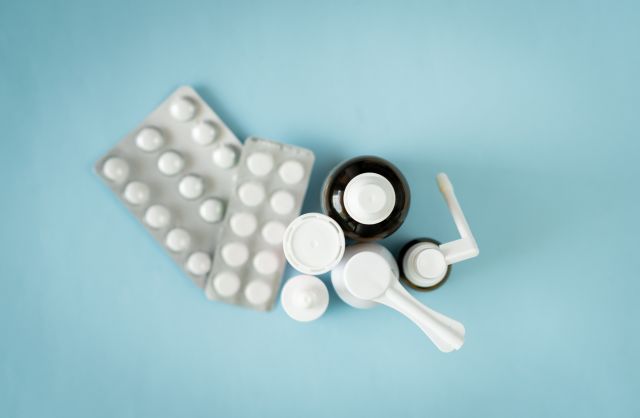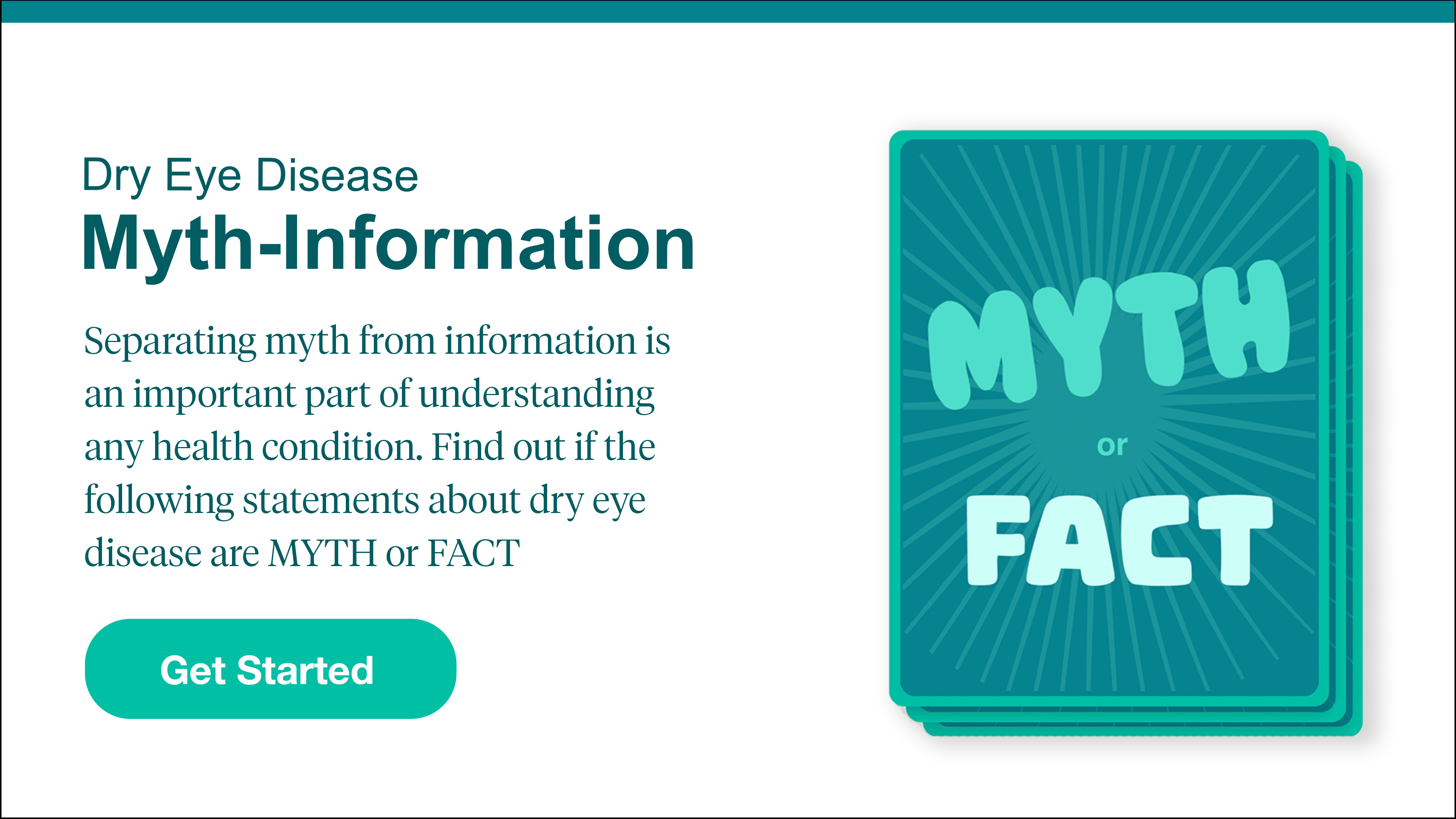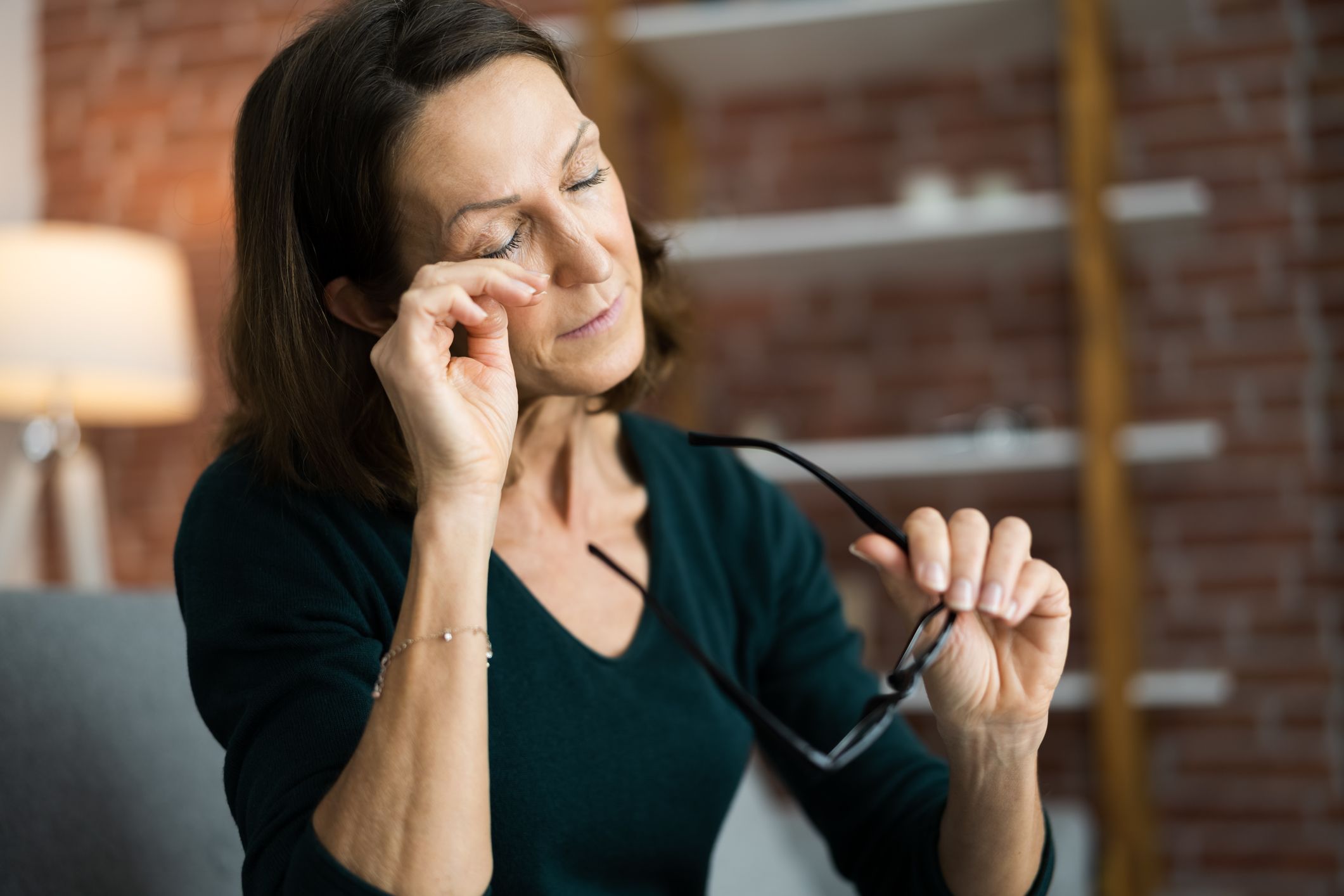Updated on February 1, 2024
Tears are an essential part of keeping your eyes healthy, helping to protect the eyes and wash away irritants and other harmful agents. When the body is unable to produce enough tears or produces low quality tears, problems can occur. These include different types of discomfort, such as burning, itching, and a scratchy or gritty feeling in the eye. A person may also experience eye pain, blurred vision, redness, and sensitivity to light.
Dry eye disease (DED) or “dry eye” is a condition where the body does not produce enough tears or produces tears that do not work well. It is also known as dry eye syndrome, keratoconjunctivitis sicca (KCS), and keratitis sicca.
Dry eye is one of the most common reasons for people to visit a healthcare provider, and if you have been experiencing symptoms of dry eye for any length of time, it’s a good idea to make an appointment with a healthcare provider. Treatment can alleviate symptoms and prevent dry eye disease from getting worse. Early diagnosis and treatment can also help prevent complications, which can include scarring and ulcers on the surface of the eye.
Treatment for dry eye disease
The choice of treatment for dry eye disease will depend on a number of factors—the type of dry eye disease someone has, the severity of symptoms, other health conditions occurring alongside dry eye, and anything that might be contributing to symptoms.
While everyone’s treatment plan is different, healthcare providers often recommend a “step-wise” approach. This means that treatment may begin with basic strategies to alleviate symptoms and therapies like artificial tears. If those approaches do not work, treatment will step up to other therapies, like medications and procedures.
However, early aggressive treatment may be recommended if symptoms have a high risk of causing complications or damaging the eyes. A healthcare provider will be your best source of information about treatment options.
Medications that stimulate tear production
Several medications are used to treat dry eye disease. Different types of medications work in different ways. Some medications work by stimulating tear production.
Immunomodulators
Immunomodulators are drugs that change how the immune system works. Several immunomodulators are used in the treatment of dry eye disease. These medications are given as eye drops and reduce inflammation in the tissues in and around the eye. Reducing inflammation can help improve the production of tears.
Cholinergic medications
A nasal spray that stimulates tear production is available for the treatment of dry eye disease. This medication is a cholinergic agonist, a medication that acts on the nervous system. It triggers the release of a neurotransmitter that triggers the production of tears.
Other cholinergic medications are sometimes mentioned in patient education materials and research about treating dry eye disease, and these may be used to treat dry eye caused by a health condition called Sjogren's syndrome. But the nasal spray is currently the only cholinergic medication approved by the U.S. Food & Drug Administration specifically for dry eye disease. Some research suggests that using a nasal spray may be easier for some people when compared to eye drops, and this may lead to better adherence.
Other treatment options for dry eye
Treatment for dry eye disease is not limited to artificial tears and medications that stimulate tear production. Therapeutic contact lenses, in-office procedures, short courses of topical corticosteroids, antibiotics, and other types of therapeutic eye drops all have a place in the treatment of dry eye disease. As mentioned above, the choice of treatment depends on many different factors. Your best source of information will be a healthcare provider.
Questions when starting a medication
It always helps to go to an appointment prepared. Here is a list of questions to ask when starting a medication or considering a treatment option:
- What is the name of the medication, procedure, or therapy?
- How does this therapy work?
- Why is this therapy being recommended?
- How long will it take before I notice an improvement in symptoms? What if symptoms do not improve?
- What are the potential side effects of this therapy?
- What should I do if I experience a side effect?
- What can I do to reduce the risk of side effects? Is there anything I need to avoid?
- Are there any long-term risks associated with this therapy?
- Is there a risk of drug interactions?
- How should a medication be stored?
- What is the cost of this therapy?
Always know the dosing instructions for any medications you are taking. To get the most benefit from a medication, you’ll need to take every dose, and take every dose on schedule.
You can also ask your healthcare provider about strategies to ease symptoms, such as warm compresses, eyelid scrubs, using a humidifier, and protecting your eyes from triggers like wind, allergens, screen time, and sun exposure.






